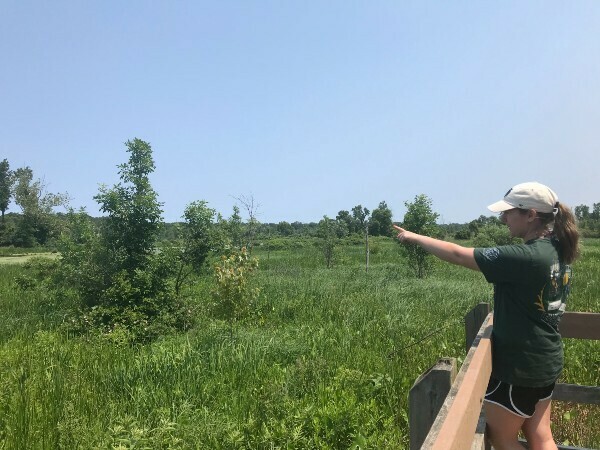Humans and Nature: Perceptions at the Indiana Dunes National Park
- Student
- Jessica Staggs
- College(s)
- College of Arts and Letters
- Faculty Advisor
- Donna Glowacki
- Class Year
- 2022
Abstract

This project investigated the way that visitors to the Indiana Dunes National Park understand humanity’s relationship to nature. Interviews and observations were conducted over the summer of 2021 and used as a basis for understanding how visitors define nature and what humanity’s place in nature is. This question is important to sustainability issues as it is widely understood that the conceptual separation of man and nature leads to unsustainable use and treatment of the natural world. It is important to investigate where people in the United States now stand in their understanding of humanity’s connection to nature as the US has a great deal of power to increase or decrease global sustainability. The Dunes were chosen for this project because as a national park they are set aside as a place for nature and conservation, but also as a place for humans to visit. The categorization of the Park as a natural space made for human visitors naturally draws out the question of humanity’s place in nature. The final result of this project is a paper drawing on multiple fields, primarily anthropology. The findings of this project indicate that visitors did largely believe humans are part of nature, but they often believed that humans are somehow set off from the rest of nature. This project also found that the meaning given to certain areas of the park by visitors affected the way they interacted with their environment, specifically that trail-goers were less likely to actively change their environment than beach-goers. Visitors drew heavily on their immediate visible surroundings to determine norms at the Park and to determine if they viewed the Park as a natural or human space. These findings can aid in future sustainable land use around the Indiana Dunes as they can allow the Park to better understand how the landscape of the Park affects visitors’ views and how best to manage the Park and create informational material to enhance sustainable action in their visitors.
Introduction
This project sought to understand how visitors to the Indiana Dunes National Park think about humanity’s relationship to nature and if humans are a part of nature, which is important to know in order to create a culture of sustainable actions and norms. An integrated understanding of humanity and nature has been theorized to create more sustainable action. Seeing humanity as a part of nature fosters a belief that actions which are detrimental to nature are also detrimental to humans. National Parks provide an important insight into this issue because they are places set aside by society as pieces of nature to be enjoyed by the humans that visit them, creating a space that is officially designated as both human and natural. The Indiana Dunes National Park in particular is important for this research because it is a very urban park with natural areas interspersed with cities and factories. For example, one of the beaches is right next to a steel factory and much of the park land has been restored after heavy industrial usage. Interviews and observations from the Dunes served to see if visitors to the Dunes had an integrated understanding of humanity and nature or if there is still a conceptual divide, especially important to understand in a place where industry and nature have had a complicated, interwoven history. As many of the visitors to the Dunes are locals, the interviews also revealed the cultural importance that both a National Park and industry can have to residents of an area, knowledge which is important to have when determining what policies and change can contribute to sustainability while allowing cultural expression of locals. The interviews also revealed the importance of the visible landscape to a person’s views of their surroundings.